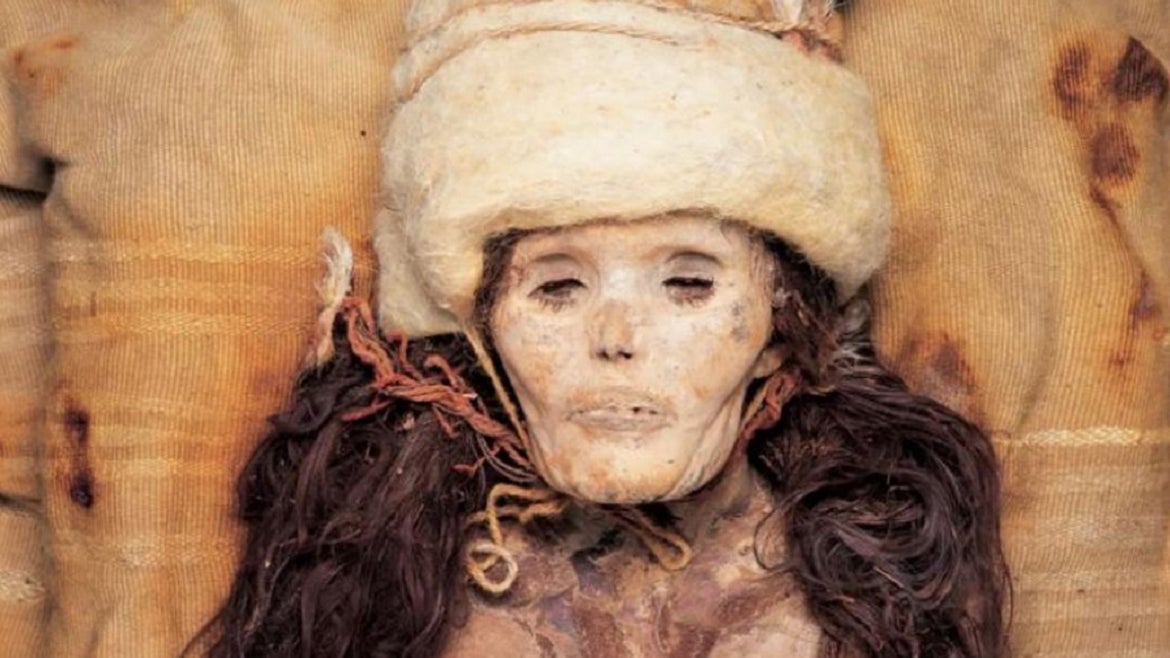The Tarim Basin mummies have long perplexed archeologists.
Archeologists have long been stumped by an exceptionally preserved set of mummies found in boats in the middle of a China desert.
A study published in the journal Nature says said the mummies are 4,000 years old and the remains belong to a local group called Ancient North Eurasians, who descended from an ancient Ice Age Asian population.
"The mummies have long fascinated scientists and the public alike since their original discovery," said Christina Warinner, an associate professor of anthropology at Harvard University.
''Beyond being extraordinarily preserved, they were found in a highly unusual context, and they exhibit diverse and far-flung cultural elements,'' she said.
The 13 mummies were discovered in the 1990s in Xinjiang's Tarim and Dzungarian Basin.
''We found strong evidence that they actually represent a highly genetically isolated local population,'' Warinner said.
''In contrast to their genetic isolation, however, they seem to have openly embraced new ideas and technologies from their herder and farmer neighbors, while also developing unique cultural elements shared by no other groups,'' she said.
They were tall, wore wool felt hats and leather booties, and some were fair-haired, which had previously led scientists to believe they were travelers from another land.
But recent DNA and genome research showed the mummies were actually locals who didn’t intermarry with surrounding herders. Yet they adopted new skills and culture. Their clothing was woven, and they built irrigation systems, milked cattle to produce cheese and grew millet and wheat, which were not native to the area.
Related Stories






